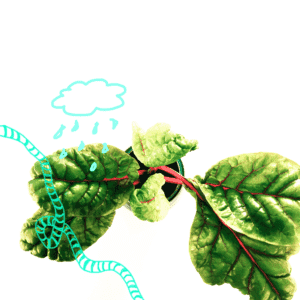Spring is just around the corner and the first warm rays of sunshine not only awaken new spirits in us: the plant world is finally getting green again. The perfect time to start sowing your plant seeds. In this article we will tell you which conditions are important for the germination of the seed and what exactly happens.
Why plants germinate in spring
So that germination does not take place under unfavorable conditions, e.g. during the winter, many seeds develop their ability to germinate only after a dormant phase - the so-called dormancy. In order to wake up from it, the seeds need certain stimuli from their environment. The most important requirements for germination are water, oxygen and suitable light conditions. The optimum temperature can vary greatly depending on the type of seed. In principle, however, constant temperatures favor germination.
Below or above ground?
A lot of people don't know, but when it comes to seeds, a distinction is made between light and dark germinators. Dark germs need darkness, which is why their seeds usually have to be a few centimeters below the surface of the soil. In contrast, the seeds of the light germinators may be hardly or not at all covered with soil. Since they are usually very small, light germs do not contain enough nutrients and therefore not enough energy to grow through a thick layer of soil.
A tiny plant embryo lies dormant within each seed
Inside the seed lies the plant embryo. It is surrounded by the seed coat and is thus protected from external influences. Most seeds are in a dry persistence state. Before a plant can develop from the embryo, the seed must absorb water and swell. The water mobilizes the reserve substances stored in the nutrient tissue. They are broken down with the help of oxygen and serve as a source of energy. In addition, the seed coat is broken open by the swelling, thus facilitating growth.
Growth begins
First the radicle grows into the soil, branches out and forms root hairs. If the root is anchored in the ground, the shoot axis emerges from the seed with the first leaves. Root and shoot axis grow in opposite directions. The directions of growth relate to gravity: the root grows towards gravity, the shoot axis away from it. With the help of light, the young seedling can now generate energy itself through photosynthesis and is no longer dependent on the limited reserves in the seed.
For the germination of your plant seeds, you should make sure that you always keep the soil moist. The best way to do this is with a spray bottle or by watering carefully. This will prevent the layer of soil covering your seeds from being washed away and exposing the seeds. If you place your plant pots on the windowsill, the young seedling will get enough light to grow into a healthy plant.




















Leave a comment